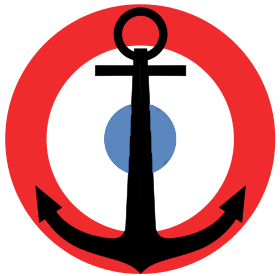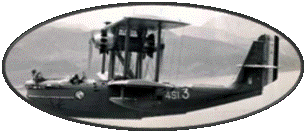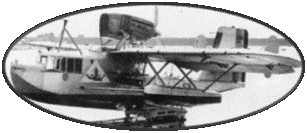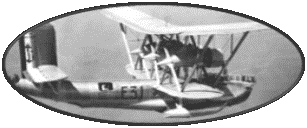In 1931, the British
Ministry of Air launched a competition to provide the Royal Air
Force with a Sea Patrol and Rescue Seaplane. The new aircraft was
to replace the outdated Supermarine Southampton and Supermarine
Scapa. Three manufacturers present a project: Saro, Short, and Supermarine.
If the three aircraft are biplanes, the Supermarine Company is the
only one to propose a seaplane of partially metallic construction,
the Southampton Mk-V.
The new hull seaplane
is thus a twin-engine biplane of mixed construction: wooden canvas
wings and metal fuselage . Two additional stabilizing floats are
installed at the end of the lower wings. Its fuselage ends with
a large bi-drift empennage. The aircraft is powered by two 820 hp
Bristol Pegasus III-M star-shaped engines, each driving two-bladed
wooden propellers. Its defensive armament consists of 3 Lewis 7.7
mm machine guns on mobile mounts in the forward, central and rear
stations. It could, in addition, carry under the wings, an offensive
armament of 450 kg: mines, bombs or anti-submarine charges. The
crew was composed of 7 crewmen, and it could occasionally carry
a maximum of 3 passengers on folding seats... The Supermarine Southampton
Mk-V made its first flight in August 1935, and was renamed at that
time: Supermarine "Stranraer".
In October and November 1935, comparative tests will be conducted
within Squadron 210 between the "Stanraer" and the Saro
"London", another competitor of the competition. At the
end of these tests, the "Stranraer" was judged to be underpowered
and it was decided to mount on future production aircraft, two Bristol
Pegasus X engines of 920 hp each driving three-bladed metal propellers
.
The RAF ordered 17 units, to which were later added an order for
6 more aircraft, but this order was eventually cancelled. Canada
showed interest in the very modern aircraft at the time of its release,
and after tests, ordered 40 copies which were built locally under
licence by the Canadian Vickers Company.
The Stranraer was successively assigned to Squadron 228 until April
1939, Squadron 209 until June 1940 and Squadron 240 until 1941,
but was finally replaced in March 1941 by American Catalina. Judged
slow, the Stanraer was not very appreciated by its crews. Nevertheless,
she will have fulfilled without fail, her missions of coastal surveillance
and protection of the coasts.
The Canadians will use their Stranraers to protect convoys between
North America and England until November 1941. Additional Stranraers
will be deployed along the Atlantic coast to protect important ports.
They will then be replaced by American Catalina boats. Thirteen
surviving aircraft will be sold to private airlines and the last
Canadian Stranraer will fly until 1957.
A Canadian copy of
the Stranraer can be seen today at the Royal Air Force Museum (London).
The aircraft presented was used during the Cassrière as a
training aircraft, anti-submarine warfare aircraft and finally as
an airliner...









